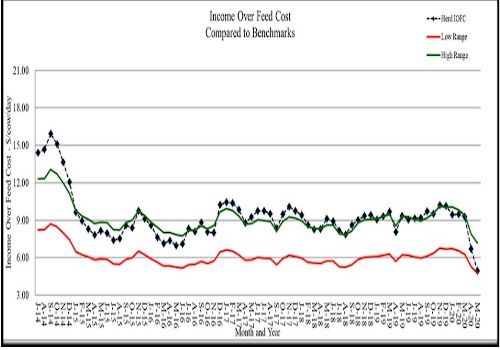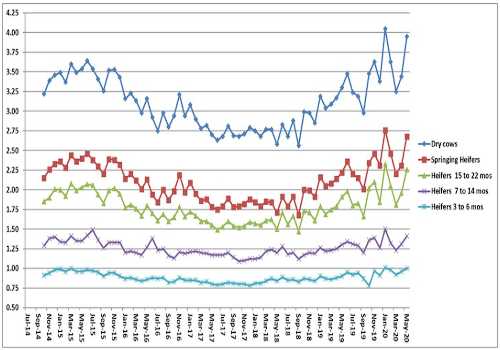Heat abatement strategies that help cool cows during difficult times of the summer can be instrumental in minimizing production losses. Herds that do not have well-ventilated facilities can experience both production and component reductions during the summer and well into the fall. The monetary impact that heat stress has on an operation can be significant. If DHIA test day data matches with the milk check, then drilling down further into various performance areas can be beneficial. If there is too much discrepancy between the milk check and DHIA, then it may be more difficult to determine the specific production group(s) causing the problem.
Economic perspective:
Monitoring must include an economic component to determine if a management strategy is working or not. For the lactating cows, income over feed cost is a good way to check that feed costs are in line with the level of milk production. Starting with July 2014’s milk price, income over feed cost was calculated using average intake and production for the last six years from the Penn State dairy herd. The ration contained 63% forage consisting of corn silage, haylage, and hay. The concentrate portion included corn grain, candy meal, sugar, canola meal, roasted soybeans, Optigen, and a mineral vitamin mix. All market prices were used.
Also included are the feed costs for dry cows, springing heifers, pregnant heifers, and growing heifers. The rations reflect what has been fed to these animal groups at the Penn State dairy herd. All market prices were used.
Income over feed cost using standardized rations and production data from the Penn State dairy herd.

Note: May’s Penn State milk price: $14.22/cwt; feed cost/cow: $6.98; average milk production: 84 lbs.
Feed cost/non-lactating animal/day.

Source : psu.edu